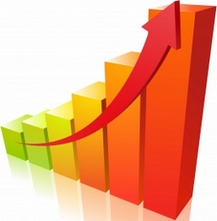Great market update from Inman News.
With distressed homes accounting for a smaller proportion of sales nationwide, median prices for existing homes were up from a year ago in nearly two-thirds of the 155 metro markets tracked by the National Association of Realtors during the second quarter.
Distressed homes accounted for 32 percent of sales, down from 36 percent a year ago, helping push the national median home price up 1.5 percent from a year ago, to $176,900, NAR said.
Sales volume of existing single-family homes and condos increased 9.1 percent from the first quarter, to a seasonally adjusted annual rate of 5.61 million. That’s a 17.3 percent increase from the 4.78 million-unit pace during the second quarter of 2009.
NAR is currently forecasting a significant drop in sales of existing single-family homes during the third quarter, however, to an annual rate of 4.55 million units. NAR’s forecast anticipates that sales will rebound to an annual pace of 5.27 million units during the final three months of the year.
Although other economists expect to see some softness in home prices in some markets during the second half of the year, NAR Chief Economist Lawrence Yun today restated his conviction that the correction in home prices appears to have ended in 2009.
“Prices in some areas remain below replacement construction costs, so even with an elevated supply of existing homes on the market we don’t expect any consequential movement in home prices for the foreseeable future,” Yun said in a statement. “Very low inventory of newly built homes also will help to support home values.”
NAR’s survey of existing-home prices showed increases in 100 of 155 metropolitan statistical areas (MSAs) tracked — including double-digit increases in 14 markets. Among the 53 metros registering price drops, five experienced double-digit declines.
Yun cautioned against reading too much into those numbers, because the median price is influenced by the mix of homes sold, and does not reflect pure appreciation or depreciation.
Sale prices in many markets last year were depressed because a large percentage of distressed homes sold at discount, Yun said. As sales of nondistressed homes make up an increasingly larger part of the mix, the median price in many areas is showing higher values, Yun said.
The top 10 appreciating markets, with second-quarter median home price and year-over-year change, were:
- Akron, Ohio ($119,700, up 36 percent)
- San Jose-Sunnyvale-Santa Clara, Calif. ($630,000, 26 percent)
- San Francisco-Oakland-Fremont, Calif. ($591,200, 25 percent)
- Riverside-San Bernardino-Ontario, Calif. ($190,200, 17.8 percent)
- Elmira, N.Y. ($99,200, 16.7 percent)
- Lansing-East Lansing, Mich. ($92,100, 13.4 percent)
- San Diego-Carlsbad-San Marcos, Calif. ($392,600, 13.1 percent)
- Palm Bay-Melbourne-Titusville, Fla. ($117,300, 12.7 percent)
- Erie, Pa. ($110,200, 12.3 percent)
- Cape Coral-Fort Myers, Fla. ($94,100, 12 percent)
- Cleveland-Elyria-Mentor, Ohio ($118,200, 11.5 percent)
The top 10 declining markets, with second-quarter median home price and year-over-year change, were:
- Cumberland, Md.-W.Va. ($104,500, -15.4 percent)
- Tucson, Ariz. ($150,200, -13.7 percent)
- Ocala, Fla. ($95,900, -13 percent)
- Beaumont-Port Arthur, Texas ($120,700, -12.9 percent)
- Boise City-Nampa, Idaho ($140,100, -12.7 percent)
- Hagerstown-Martinsburg, Md.-W.Va. ($149,800, -9.2 percent)
- Jacksonville, Fla. ($139,000, -9 percent)
- Deltona-Daytona Beach-Ormond Beach, Fla. ($117,000, -8 percent)
- Salem, Ore. ($176,800, -7.5 percent)
- Gulfport-Biloxi, Miss. ($128,500, -7.4 percent)



